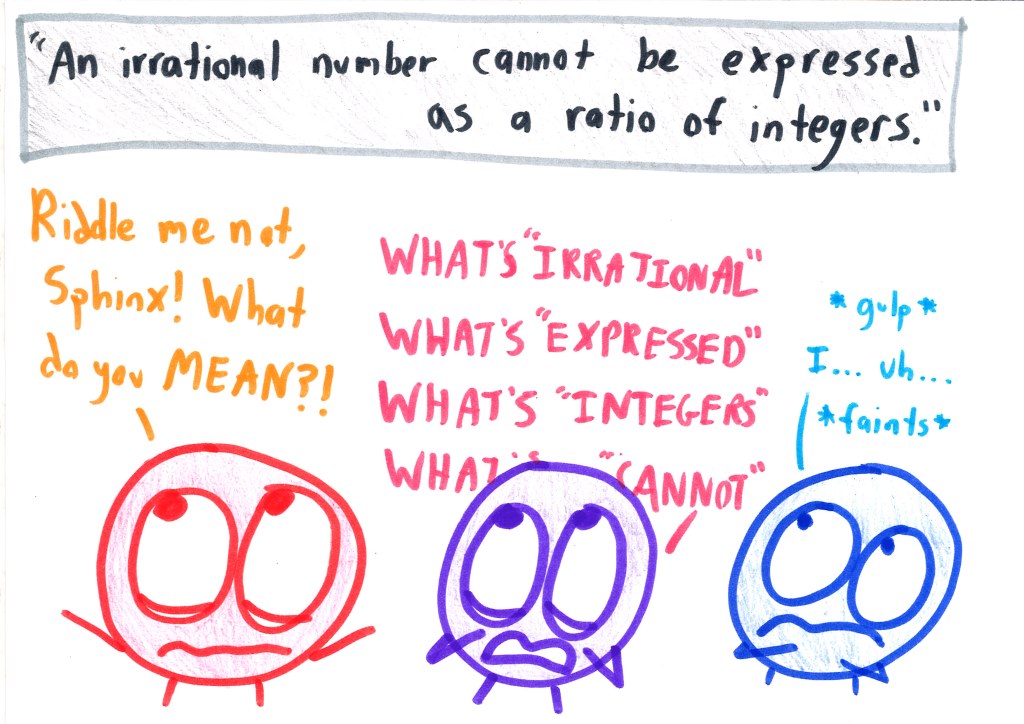Today I would like to take the time and talk about comprehension. “Why you may ask?” Well the answer to this simple. In chapters 4-9 in the McLaughlin (2015) text that is what the key information is about. Yes, they discuss vocabulary, lesson goals to develop our instruction and ways to reach our ESL (English as a Second Language) learners. Let’s be honest these topics tie into ensuring that our students comprehend the text that they are reading. By utilizing vocabulary proper lessons and planning to reach all our students (ESL included) reading comprehension in our content area is our main goal. These strategies involve previewing, making connections, monitoring/clarifying, self-questioning, visualizing, summarizing and evaluating.

Metsisto on Reading Strategies
As a math teacher we have people see the subject as an outside subject. According to Diana Metsisto, In Chapter 2 Reading in the Mathematics Classroom (2015), math teachers must recognize that students must be able to read math text. It is our responsibility to develop a strategic process for our students to understand the text and be able to work the problems based off the understanding. The strategies we must use should follow the basic strategies for a reader. These strategies, as listed by Metsisto are:
Before reading, the strategic reader
- Previews the text by looking at the title, the pictures, and the print in order to evoke relevant thoughts and memories
- Builds background by activating appropriate prior knowledge about what he or she already knows about the topic (or story), the vocabulary, and the form in which the topic (or story) is presented
- Sets purposes for reading by asking questions about what he or she wants to learn (know) during the reading episode
While reading, the strategic reader
- Checks understanding of the text by paraphrasing the author’s words
- Monitors comprehension by using context clues to figure out unknown words and by imagining, inferencing, and predicting
- Integrates new concepts with existing knowledge, continually revising purposes for reading
After reading, the strategic reader
- Summarizes what has been read by retelling the plot of the story or the main idea of the text
- Evaluates the ideas contained in the text
- Makes applications of the ideas in the text to unique situations, extending the ideas to broader perspectives. (p. 524)
These provide us with a way of making our own strategic methods. For math teachers our strategies are as follows
- Before Reading: We ask questions that we want students to consider when approaching the problems. With this section we can utilize vocabulary of the new topic
- During reading: We need to give the students detailed scaffolding experience to help them connect the text to prior knowledge.
- After reading: We assist students in seeing if they can paraphrase the problem and be able to know what they key concepts are.
Metsisto gives major insights to different strategies in reading math text. The strategies list goes beyond just giving a vocabulary list and expecting a student to learn based off that. Metsisto wants us to understand that it is “part of our (their) job in helping our (their) students become autonomous, self-directed learners is first to help them become strategic, facile readers of mathematics text (2015). “
In my Classroom
For my math class we work in a whole group learning environment. To ensure comprehension among all my students I work with the KWL and KWLS monitoring/clarifying strategy. When we begin the new topic, in all parts of my class not just the reading problems, I revisit what we have already learned in the previous lesson. This is the section that my students can say, “What I know.” This is also the part where my students can access prior knowledge of the topic. Next, I will introduce what the new information we will be looking at is. Here I will give them examples of the new information and they can say, “What I want to know…” They final step is where I let them work on problems to ensure comprehension of the math text and problem-solving skill needed. This is the portion of the strategy where they can state, “What I learned.”
Conclusion
Mathematics has explicit instruction and to ensure students fully know how to do it they must comprehend math text. A math teacher doesn’t have to be a literacy leader or reading specialist to recognize when a student needs help in reading math text. However, it is the strategies of reading comprehension that can support us in our assistance of our students. Chapter 4-9 gives us multiple strategies that can lead our students in comprehension of text and assist us in outlining plans for all our students.
References:
- McLaughlin, M. (2015). Content area reading: Teaching and learning for college and career readiness(2nd ed.). Boston: Pearson.
- Metsisto, D. (2005). Chapter 2. Reading in the Mathematics Classroom. Retrieved November 09, 2018, from http://www.ascd.org/publications/books/105137/chapters/Reading-in-the-Mathematics-Classroom.aspx
